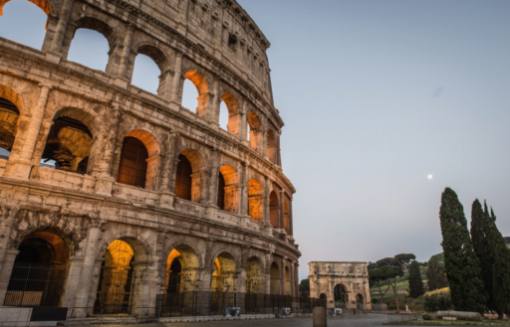Beneath the bustling streets of modern-day Rome lie a network of ancient underground passageways known as the Catacombs. These winding tunnels are not only a fascinating archaeological site but also serve as a testament to the early days of Christianity in Rome. Featuring intricate symbolism and iconography, the Catacombs provide valuable insights into the burial practices and beliefs of early Christians. Through ongoing exploration and preservation efforts, these underground catacombs continue to offer a unique glimpse into the rich history of Christianity in Italy.

Symbolism and Iconography in the Catacombs
Throughout the catacombs, images of biblical stories, symbols of faith, and representations of Christ and the saints can be found on the walls and ceilings of the burial chambers. These images served as both a form of decoration and a way to communicate the Christian faith to those who visited the catacombs to pay their respects to the deceased.
One common motif found in the catacombs is the image of the Good Shepherd, a popular representation of Christ in early Christian art. The Good Shepherd is often depicted as a young man carrying a lamb on his shoulders, symbolizing Christ's role as the protector and savior of his followers. This image conveys the idea of Christ as a compassionate and caring shepherd who guides his flock to safety and salvation.
Another significant symbol found in the catacombs is the fish, which was used as a secret symbol of Christianity during times of persecution. The Greek word for fish, "ichthys," is an acronym for the phrase "Jesus Christ, Son of God, Savior," making it a fitting symbol for early Christians to use to identify themselves to one another. The image of the fish can be found throughout the catacombs, often accompanied by other Christian symbols such as the anchor (symbolizing hope) and the chi-rho (the first two letters of Christ's name in Greek).
Overall, the symbolism and iconography found in the catacombs provide a glimpse into the beliefs and practices of early Christianity. These images served as a way for early Christians to express their faith, convey their beliefs to others, and create a sense of community among believers. As such, the catacombs remain an important archaeological site for studying the early history of Christianity and the ways in which it was practiced and expressed by its followers.
Early Christian Burial Practices in the Catacombs
These underground passageways served as both a place of burial and a place of worship for the early Christian community. The catacombs were created as a response to the Roman Empire's prohibition of burial within the city walls, leading Christians to bury their dead in elaborate underground tombs.
The early Christians believed in the resurrection of the body and the afterlife, so they took great care in the preparation and burial of their deceased. Bodies were usually placed in simple stone sarcophagi or on shelves carved into the walls of the catacombs. The deceased were often accompanied by personal belongings or symbols of their faith, such as the fish symbol or the Chi-Rho symbol.
The catacombs also served as a place of commemoration and worship for the early Christian community. Families would gather in the catacombs to remember and pray for their deceased loved ones. Early Christians believed that by praying for the souls of the departed, they could help them on their journey to the afterlife.
The catacombs provide a valuable insight into the beliefs and practices of early Christians surrounding death and the afterlife. The elaborate burial practices and symbolism found in the catacombs reflect the early Christian belief in the resurrection of the body and the importance of commemorating the deceased.
Exploration and Preservation Efforts in the Catacombs
Archaeologists and historians have worked tirelessly to map out the intricate labyrinth of tunnels and chambers, revealing insights into early Christian burial practices and religious symbolism. Preservation efforts have also been focused on protecting the delicate frescoes, sculptures, and inscriptions that adorn the walls of the catacombs, ensuring that future generations can continue to study and appreciate this important aspect of early Christianity. By documenting and conserving these underground testimonies, researchers are able to piece together a more complete understanding of the beliefs and practices of early Christians, shedding light on a pivotal period in the history of Christianity.
